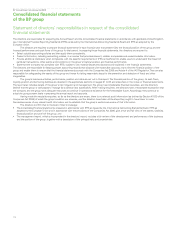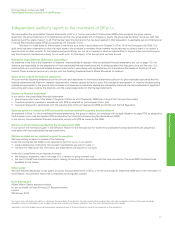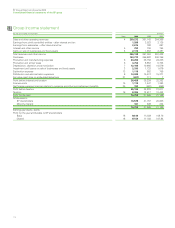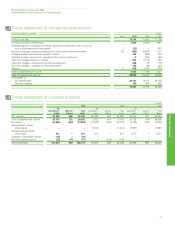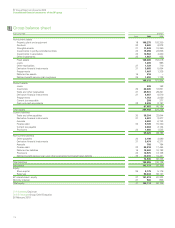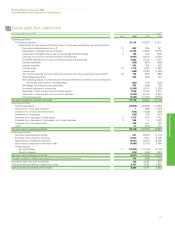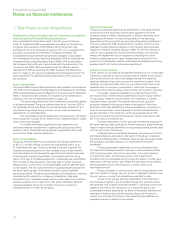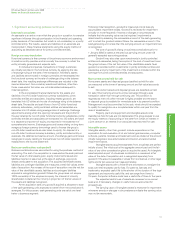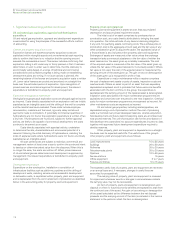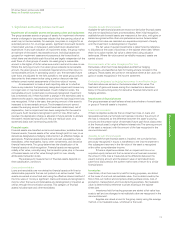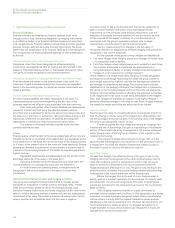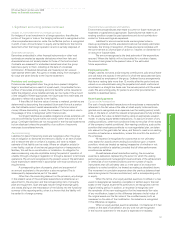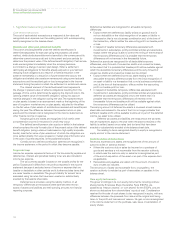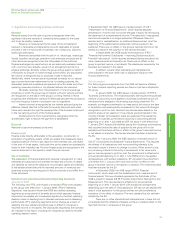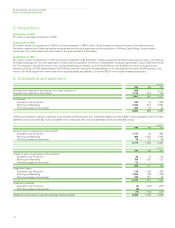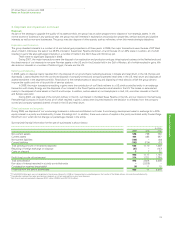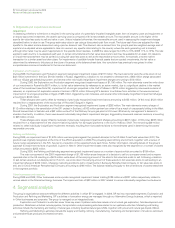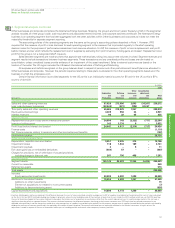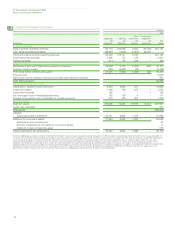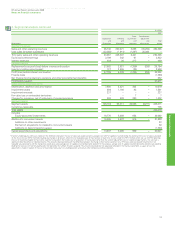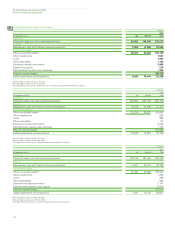BP 2009 Annual Report Download - page 122
Download and view the complete annual report
Please find page 122 of the 2009 BP annual report below. You can navigate through the pages in the report by either clicking on the pages listed below, or by using the keyword search tool below to find specific information within the annual report.
1. Significant accounting policies continued
Financial liabilities
Financial liabilities are classified as financial liabilities at fair value
through profit or loss; derivatives designated as hedging instruments
in an effective hedge; or as financial liabilities measured at amortized
cost, as appropriate. Financial liabilities include trade and other payables,
accruals, finance debt and derivative financial instruments. The group
determines the classification of its financial liabilities at initial recognition.
The measurement of financial liabilities depends on their classification,
as follows:
Financial liabilities at fair value through profit or loss
Derivatives, other than those designated as effective hedging
instruments, are classified as held for trading and are included in this
category. These liabilities are carried on the balance sheet at fair value
with gains or losses recognized in the income statement.
Derivatives designated as hedging instruments in an effective hedge
Such derivatives are carried on the balance sheet at fair value, the
treatment of gains and losses arising from revaluation are described
below in the accounting policy for derivative financial instruments and
hedging activities.
Financial liabilities measured at amortized cost
All other financial liabilities are initially recognized at fair value. For
interest-bearing loans and borrowings this is the fair value of the
proceeds received net of issue costs associated with the borrowing.
After initial recognition, other financial liabilities are subsequently
measured at amortized cost using the effective interest method.
Amortized cost is calculated by taking into account any issue costs, and
any discount or premium on settlement. Gains and losses arising on the
repurchase, settlement or cancellation of liabilities are recognized
respectively in interest and other revenues and finance costs.
This category of financial liabilities includes trade and other
payables and finance debt.
Leases
Finance leases, which transfer to the group substantially all the risks and
benefits incidental to ownership of the leased item, are capitalized at the
commencement of the lease term at the fair value of the leased property
or, if lower, at the present value of the minimum lease payments. Financ
charges are allocated to each period so as to achieve a constant rate of
interest on the remaining balance of the liability and are charged directly
against income.
Capitalized leased assets are depreciated over the shorter of the
estimated useful life of the asset or the lease term.
Operating lease payments are recognized as an expense in the
income statement on a straight-line basis over the lease term.
For both finance and operating leases, contingent rents are
recognized in the income statement in the period in which they
are incurred.
Derivative financial instruments and hedging activities
The group uses derivative financial instruments to manage certain
exposures to fluctuations in foreign currency exchange rates, interest
rates and commodity prices as well as for trading purposes. Such
derivative financial instruments are initially recognized at fair value on the
date on which a derivative contract is entered into and are subsequently
remeasured at fair value. Derivatives are carried as assets when the fair
value is positive and as liabilities when the fair value is negative.
Contracts to buy or sell a non-financial item that can be settled net in
cash or another financial instrument, or by exchanging financial
instruments as if the contracts were financial instruments, with the
exception of contracts that were entered into and continue to be held
for the purpose of the receipt or delivery of a non-financial item in
accordance with the group’s expected purchase, sale or usage
requirements, are accounted for as financial instruments.
Gains or losses arising from changes in the fair value of
derivatives that are not designated as effective hedging instruments are
recognized in the income statement.
For the purpose of hedge accounting, hedges are classified as:
• Fair value hedges when hedging exposure to changes in the fair value
of a recognized asset or liability.
• Cash flow hedges when hedging exposure to variability in cash flows
that is either attributable to a particular risk associated with a
recognized asset or liability or a highly probable forecast transaction.
• Hedges of a net investment in a foreign operation.
At the inception of a hedge relationship the group formally designates
and documents the hedge relationship for which the group wishes to
claim hedge accounting, together with the risk management objective
and strategy for undertaking the hedge. The documentation includes
identification of the hedging instrument, the hedged item or transaction,
the nature of the risk being hedged, and how the entity will assess the
hedging instrument effectiveness in offsetting the exposure to changes
in the hedged item’s fair value or cash flows attributable to the hedged
item. Such hedges are expected at inception to be highly effective in
achieving offsetting changes in fair value or cash flows. Hedges meeting
the criteria for hedge accounting are accounted for as follows:
Fair value hedges
The change in fair value of a hedging derivative is recognized in profit or
loss. The change in the fair value of the hedged item attributable to the
risk being hedged is recorded as part of the carrying value of the hedged
item and is also recognized in profit or loss.
The group applies fair value hedge accounting for hedging fixed
interest rate risk on borrowings. The gain or loss relating to the effective
portion of the interest rate swap is recognized in the income statement
within finance costs, offsetting the amortization of the interest on the
underlying borrowings.
If the criteria for hedge accounting are no longer met, or if the
group revokes the designation, the adjustment to the carrying amount of
ea hedged item for which the effective interest rate method is used is
amortized to profit or loss over the period to maturity.
Cash flow hedges
For cash flow hedges, the effective portion of the gain or loss on the
hedging instrument is recognized within other comprehensive income,
while the ineffective portion is recognized in profit or loss. Amounts
taken to equity are transferred to the income statement when the
hedged transaction affects profit or loss. The gain or loss relating to the
effective portion of interest rate swaps hedging variable rate borrowings
is recognized in the income statement within finance costs.
Where the hedged item is the cost of a non-financial asset or
liability, such as a forecast transaction for the purchase of property, plant
and equipment, the amounts recognized within other comprehensive
income are transferred to the initial carrying amount of the non-financial
asset or liability.
If the hedging instrument expires or is sold, terminated or
exercised without replacement or rollover, or if its designation as a hedge
is revoked, amounts previously recognized within other comprehensive
income remain in equity until the forecast transaction occurs and are
transferred to the income statement or to the initial carrying amount of a
non-financial asset or liability as above. If a forecast transaction is no
longer expected to occur, amounts previously recognized in equity are
reclassified to the income statement.
120
BP Annual Report and Accounts 2009
Notes on financial statements


